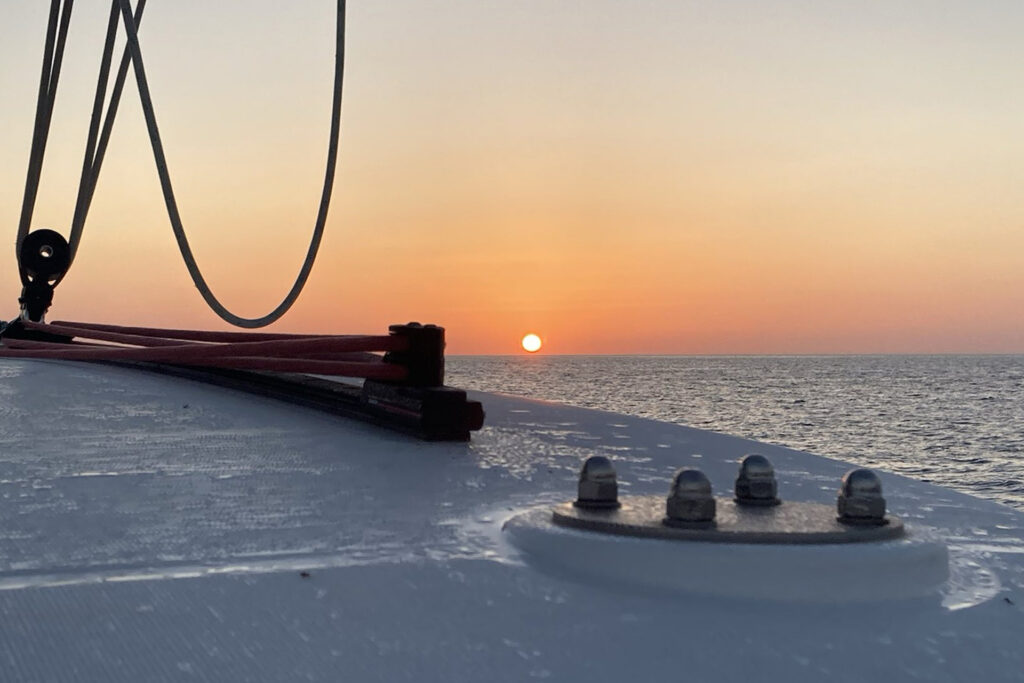At first glance, motoring with a catamaran seems quite simple – just start the engine and off you go.
But in fact, with a few tips you can save a lot of noise and fuel and therefore sail much more comfortably and economically with SUNCE. The fact that this also protects the engines and increases safety is a nice additional effect.
The insider secret: One is better then two
Even experienced skippers and instructors (unfortunately including those from our rental agency) still believe that a catamaran has two engines because otherwise it cannot sail straight out and therefore both engines must always be running at the same time, even on longer trips.
Fortunately, this is not the case, on the contrary.
SUNCE only needs the two engines for maneuvering in the harbour basin, when anchoring or setting sail.
For normal cruising through the water, only one engine should be used, which is extra large (115 hp per engine) to provide sufficient power and speed and arranged in such a way that the boat runs straight ahead and can be steered easily with only a slight rounding.
The advantages are so obvious that it is always surprising how little this is known:
- Each of the engines has a basic consumption of just under 5 liters of diesel per hour. Switching off one engine saves about 5 liters of diesel per hour or almost 40 liters per 100 km / 50 miles.
- The noise level in the rear cockpit and especially inside the boat is almost halved if only one engine is used, and the same applies to vibrations.
- As the second engine is spared, it is available as a reserve engine in case of doubt, especially in very hot conditions when engines can overheat due to ventilation problems.
- The fact that switching off the second engine also protects the environment and almost doubles the service life of the engines is an additional effect that should not be neglected in terms of protecting the ever warmer oceans.
And what about the speed?
SUNCE is designed for a maximum speed under engine of 7 knots, whether one or two engines, you should not go faster otherwise you will increase consumption and wear enormously. However, you can easily reach 7 knots with one engine in calm weather; you don’t need the second engine for this.
If you drive through the water with two engines at 8 or more knots SUNCE, you will not only burn enormous amounts of diesel but also violate the operating instructions and lose your insurance cover in the event of engine damage.
But: When maneuvering in the harbor, anchoring or setting sail, i.e. whenever you need high maneuverability at very low speed, the second engine is needed. When entering the harbor, simply set the throttle lever of the second engine to the middle position, switch on the ignition and starter and use both engines for maneuvering. After leaving the harbor, the second engine can then be switched off again and the ignition switched off. The throttle should then be moved back to reverse so that the second propeller does not turn, which further reduces the noise level.
Important: Alternate between the motors from day to day if possible, so that both motors are loaded approximately equally, which increases reliability and makes maintenance of the motors (one appointment for both motors) easier. The operating hours counter helps to check that the operating times are balanced.
